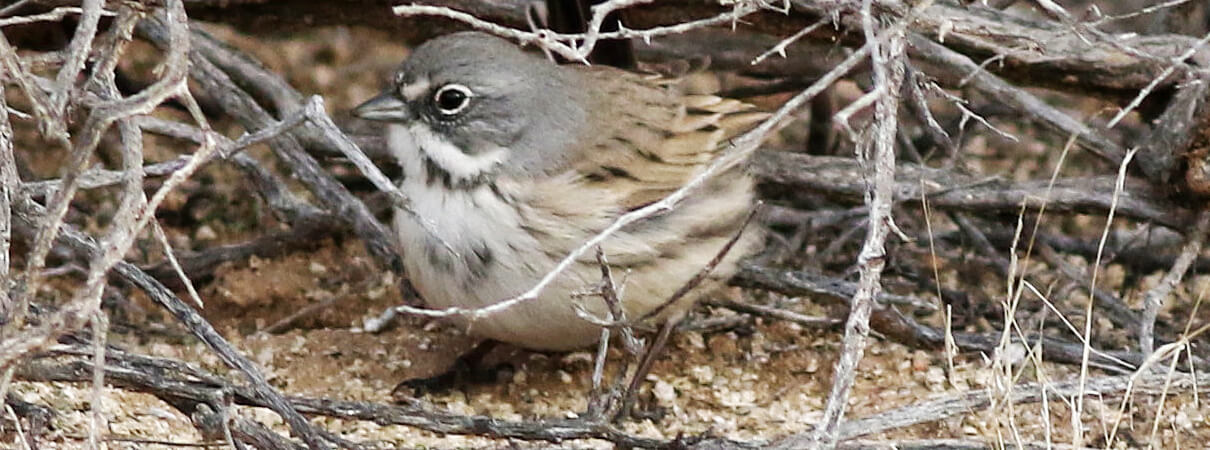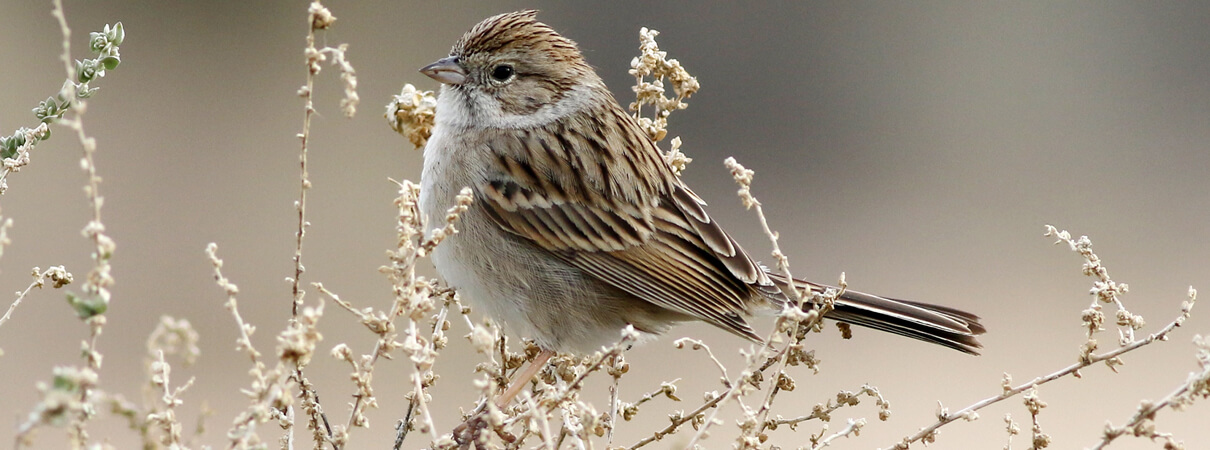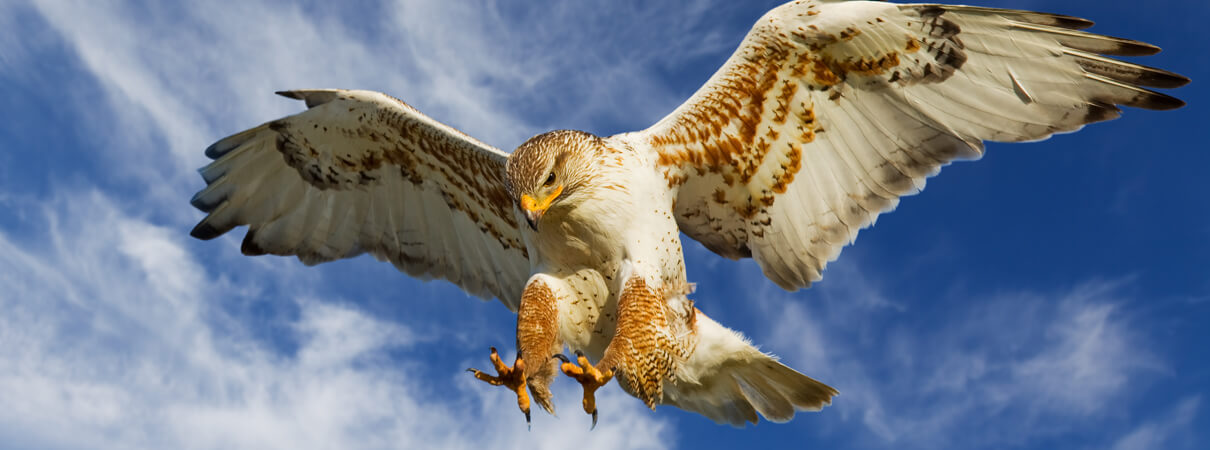Meet the Birds of the Sagebrush Country
The sagebrush ecosystem the Greater Sage-Grouse depends on is considered one of the most imperiled in the U.S. This expansive, treeless landscape teems with sagebrush, wildflowers, and native grasses, but it now covers only half of its former range. Meet a few of the birds that, like the sage-grouse, rely on this unique habitat to survive. (And read more about efforts to conserve the grouse.)
Sagebrush Sparrow

Sagebrush Sparrow by Mike Parr
The medium-sized Sagebrush Sparrow is found mostly on the ground or hidden in shrubs. Research published in the Journal of Wildlife Management showed that Sagebrush Sparrows and Brewer's Sparrows declined significantly in Wyoming's Upper Green Basin as the number of natural gas wells in the area increased, suggesting that the region's songbirds could also be affected by increased energy development.
Brewer's Sparrow

Brewer's Sparrow by Mike Parr
The smallest North American sparrow, the Brewer's Sparrow is considered an especially sensitive species. Reports show that the bird has been steadily declining over the last few decades despite once being among the most abundant birds in the large area known as the Intermountain West, which stretches from Washington to Colorado.
Much like the sage-grouse, fragmentation and loss of sagebrush habitat is a key threat to this bird. Research shows that these sparrows are more abundant near large sage-grouse leks, suggesting that conservation of breeding habitat for sage-grouse could also benefit this sparrow.
Sage Thrasher

Sage Thrasher by Martha Marks/Shutterstock
This species is considered at risk largely due to loss of or damage to its breeding habitat caused by oil and gas development, agriculture, and the spread of invasive plants. A recent study by researchers at the University of Wyoming showed that gas fields in western Wyoming tend to attract rodents, which prey on the nests of Sage Thrashers and other sagebrush-obligate birds, resulting in population declines.
Gray Flycatcher

Gray Flycatcher by Greg Homel/Natural Elements Productions
This small bird typically occurs in open areas, particularly in the Great Basin. Considered a sensitive species in Washington State by the U.S. Forest Service and Bureau of Land Management, it relies on sagebrush plains and benefits from maintenance not only of sagebrush but also of juniper and pinyon pines that serve as nesting and feeding habitat.
Ferruginous Hawk

Ferruginous Hawk by Stephen Mcsweeny/Shutterstock
The largest of North American hawks, the Ferruginous Hawk occurs in open areas of the West, including arid grasslands, sagebrush steppe, and pinyon-juniper woodlands. This hawk preys on Greater Sage-Grouse, so also suffers from loss or degradation of sagebrush habitat.
This article first appeared in the winter 2017-18 issue of Bird Conservation magazine.
 | Divya Abhat is a freelance writer based in the Washington, D.C. area. She has written about wildlife, the environment, and scientific research and discovery for the Atlantic, Smithsonian magazine, and NPR, among other outlets. |


















































